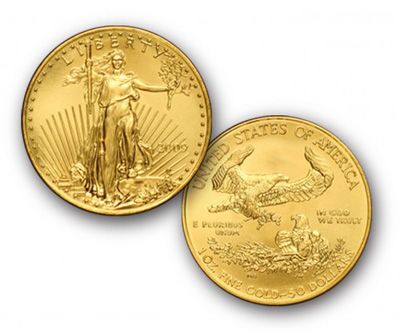
Buying & Selling Gold & Silver Bullion Coins
These are gold & silver bullion-type coins that we buy and sell regularly. With the meteoric rise in gold and silver prices over the past few years, we see many people either cashing in on what has been a very good investment (up to 500% to 700% profit over the last 10 to 20 years!), or purchasing hoping for comparable gains going forward. Along with this activity comes the question, “Should I sell or should I wait?”
The answer is not straightforward. If you purchased at or near the top of the market the last time gold and silver was high, in 1980 (gold $850 silver $48.70), it took 30 years for prices to be high enough to get your money back for gold after looking at a 60% to 80% loss for most of that time. If you purchased silver at $48.70, you are still waiting to turn a profit. Not fun. On the other hand, if you were savvy enough to buy 10 or 15 years ago when the price was as low as $251.70 (1999) a troy ounce for gold, you would have locked in massive gains on your investment. What’s not to like?
I often tell clients when asked these questions that “My crystal ball is in the shop.” I think that if you purchased at a lower price, it’s not a bad time to cash in if you need the funds for something or you want to put the money into a less speculative investment like bonds. With the extreme run up in prices it would be surprising if we did not see some sort of pull back in prices in the relatively near future.
On the other hand, if you are looking to protect yourself against inflation, it may be prudent to have at least some of your savings in hard assets that traditionally go up in value as relative currency value decreases. The current inflation rate is running at a 3% to 5% yearly rate. There are no guarantees, and you certainly cannot eat a piece of silver or gold during hard times, but many cultures in the world see gold in particular as the safest place to keep your savings. If you look back through history, gold has been a store of value used as a medium of exchange for at least 6,000 years.
If you are looking to purchase gold or silver as an investment, what is the best form to purchase? In 1980, when there were great quantities of material coming on to the market, refineries started discounting (charging large fees when they purchased) gold and silver material that was not in a fully refined state. Examples of this would be sterling silver (92.5% pure), U.S. silver coins minted before 1965 (90% pure) and U.S. gold coins minted before 1935 (90% pure). This discount was as much as 10%, which would reduce the rate of return on the investment substantially. This would suggest that gold or silver in its pure form (usually available as 0.999 or 99.9% pure) would be the way to go.
We’re still not done, though, because there is also a large premium charged today on pure gold and silver bullion products that are in higher demand. Higher grade proof-state bullion coins such as the American gold or silver eagles can sell for a collectible premium as much as 50% to 100% or more above their bullion value. Gold bullion coins with the lowest premiums currently are gold 1-ounce Krugerrands, a bullion coin issued by the South African government and usually available for 1% to 2% above their gold value. A silver bullion coin with a lower premium is the Mexican 1-ounce libertad, also available for 1% to 2% above the silver spot price (the daily price set in the commodities markets). These types of coins are plentiful and are readily available as of December 2012.
We are currently buying and selling gold, silver, and platinum bullion coins for our clients. Do you also have Pre-1964 US silver coins? Find out how we help our clients realize the best prices for their items with outright purchasing and estate sale services.
bullion, coins, gold, gold and silver, gold bullion, gold coins, platinum, platinum bullion, silver, silver bullion, silver coins




